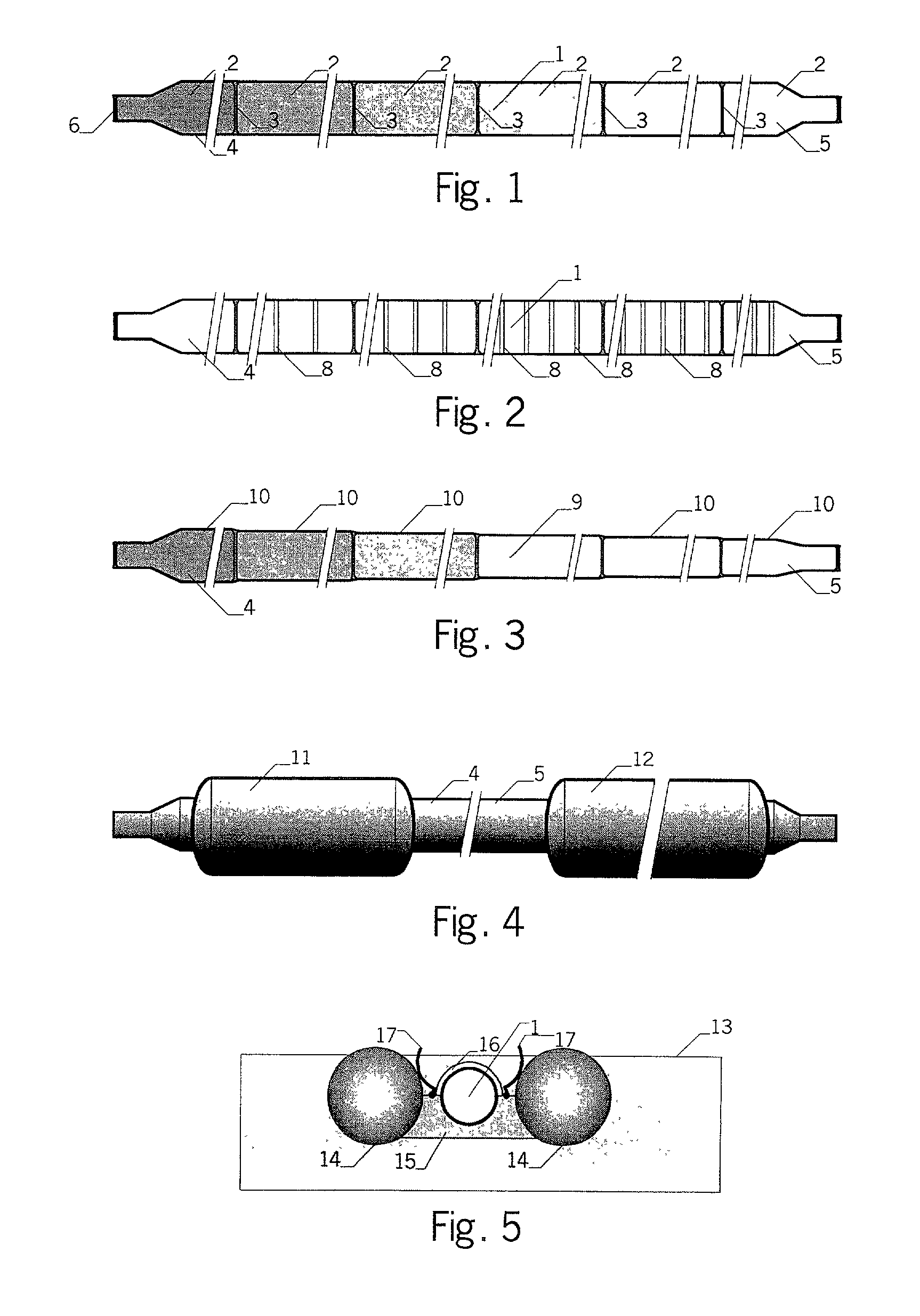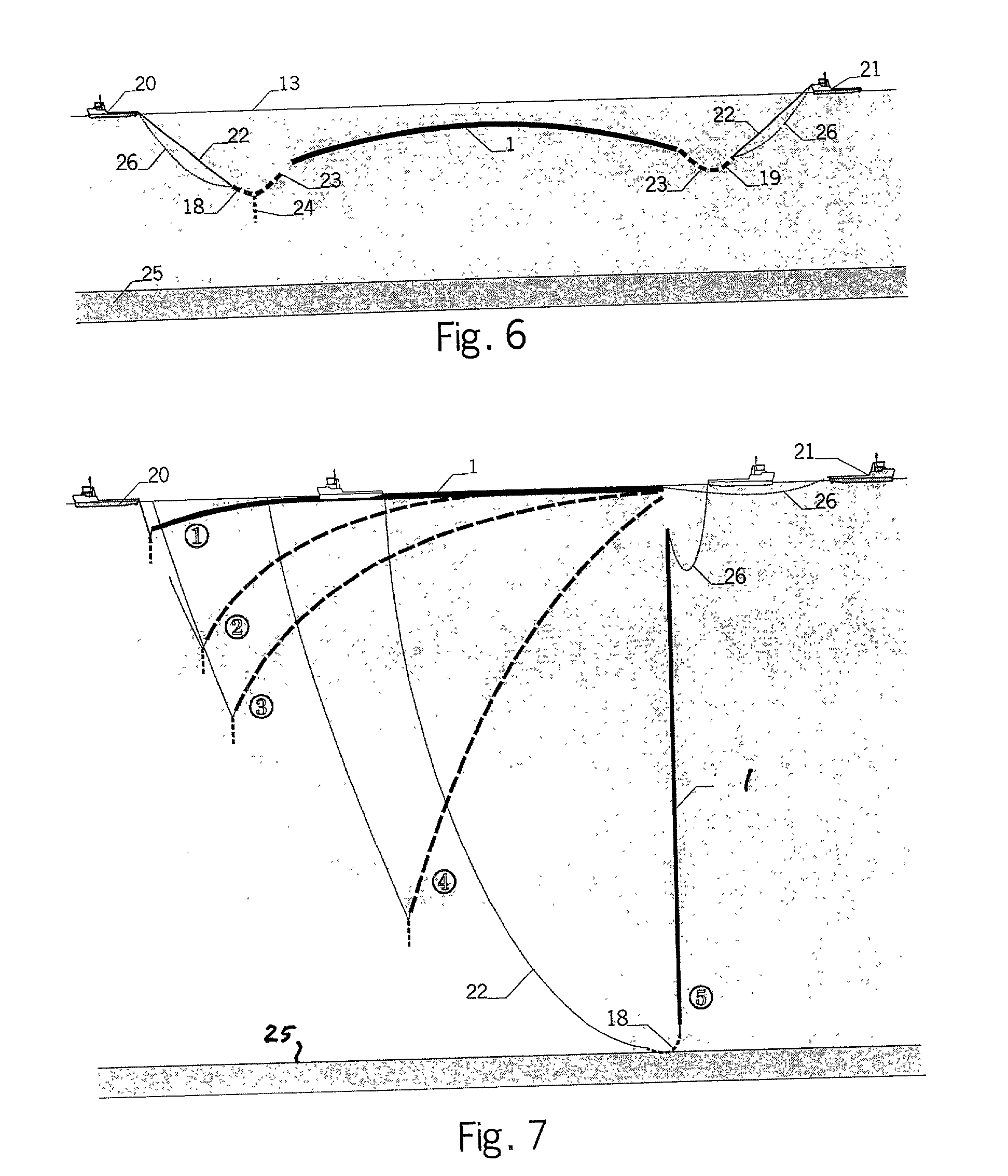Tension leg and method for transport, installation and removal of tension legs pipelines and slender bodies
a technology of tension leg and pipeline, which is applied in the direction of floating buildings, bulkheads/piles, and fluid removal. it can solve the problems of inability to achieve desirable, increased displacement of platforms, and increased tendons, so as to reduce the inherent buoyancy of the tendon, eliminate or significantly reduce the effect of external stresses generating buckling loads
- Summary
- Abstract
- Description
- Claims
- Application Information
AI Technical Summary
Benefits of technology
Problems solved by technology
Method used
Image
Examples
Embodiment Construction
[0052] FIG. 1 shows schematics of a tendon 1 with uniform diameter that is divided by inner bulkheads 3 into compartments 2. The compartments 2 are pressurized by gas to nearly ambient pressure at the operation depth where the lower compartment 4 has the largest pressure and the upper compartment 5 has the lowest pressure, often equal to atmospheric pressure. Shading of different density indicates the pressure level in the individual compartments 2, 4 and 5. Each of the inner bulkheads 3, is outfitted for pressurization by gas or for both pressurization by liquid (for pressure testing) and for final pressurization by gas. In the former case the outfitting includes a valve and a backup valve on a pipe through the bulkhead as shown in FIG. 24.
[0053] FIG. 24 shows an arrangement of a bulkhead 3 separating adjacent compartments 2 and with outfitting for final pressurization consisting of a pipe 56 with valves 57 and 58 (one of these as backup). Upon completion of pressurization the valv...
PUM
 Login to View More
Login to View More Abstract
Description
Claims
Application Information
 Login to View More
Login to View More - R&D
- Intellectual Property
- Life Sciences
- Materials
- Tech Scout
- Unparalleled Data Quality
- Higher Quality Content
- 60% Fewer Hallucinations
Browse by: Latest US Patents, China's latest patents, Technical Efficacy Thesaurus, Application Domain, Technology Topic, Popular Technical Reports.
© 2025 PatSnap. All rights reserved.Legal|Privacy policy|Modern Slavery Act Transparency Statement|Sitemap|About US| Contact US: help@patsnap.com



